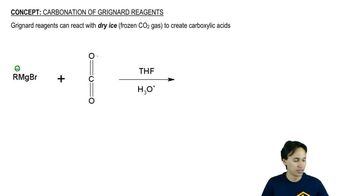What product is formed when 3-methyl-2-cyclohexenone reacts with each of the following reagents?
a. CH3MgBr followed by H3O+
b. (CH3CH2)2CuLi followed by H3O+
 Verified step by step guidance
Verified step by step guidance Verified video answer for a similar problem:
Verified video answer for a similar problem:



 0:24m
0:24mMaster Intro to Predict the Product with a bite sized video explanation from Johnny
Start learning